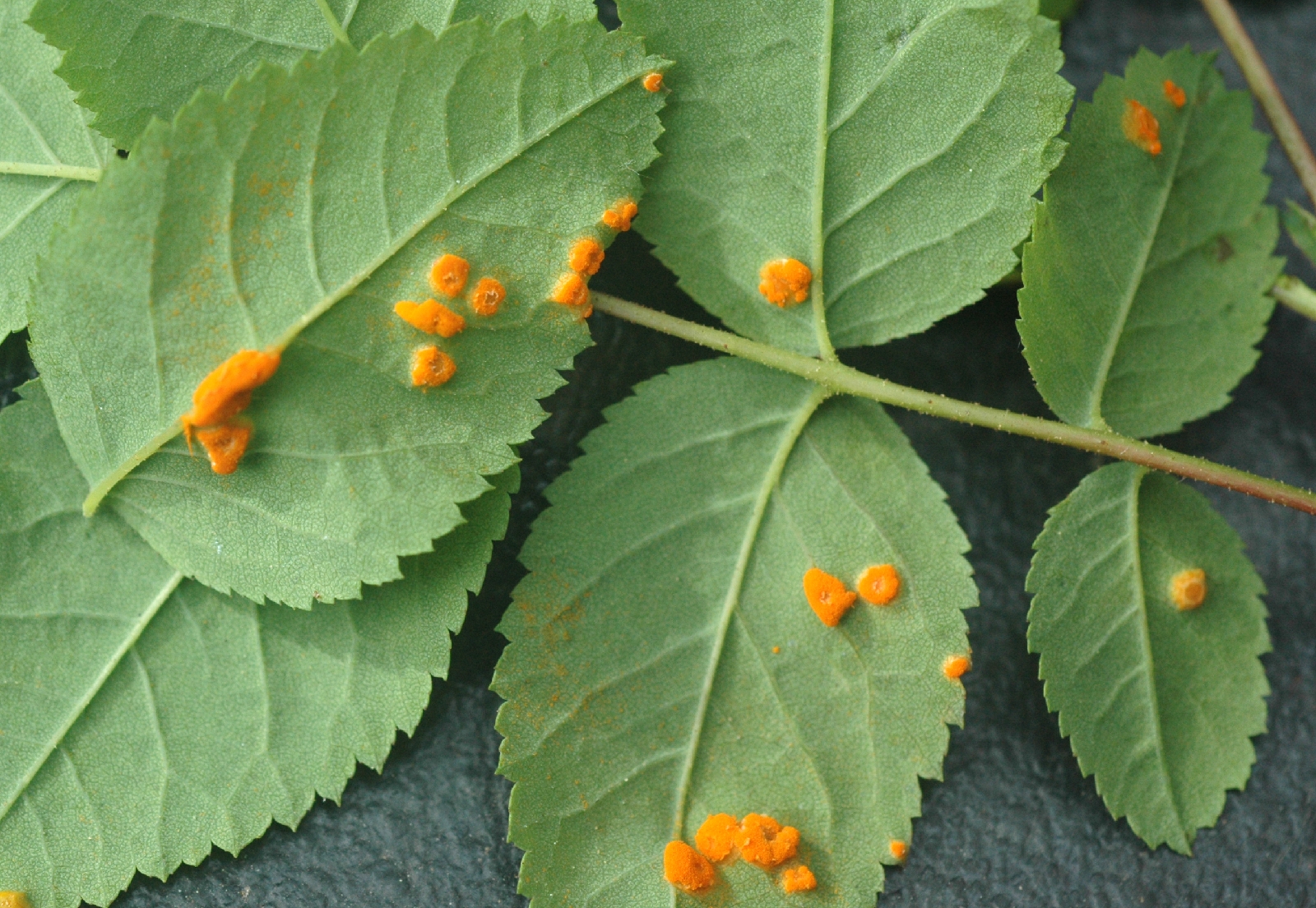Rose rust is a fungus of the Phragmidium family and it's easy to identify: Orange, powdery dots on foliage and stems which will eventually spread. At a last stadium the leaves turn yellow and fall off.
It's essential to use your eyes when going into your garden. Especially in cooler, wet springs and summers Rust can occur. So inspect the foliage on a regular basis so you can start treatment immediately. Start with removing all infected leaves. Prune them away with your ✂, collect them and throw them in the garbage bin. A proven, organic treatment of rust is using Neem oil. Carefully follow the instructions on the label and always spray in the evening when sun is down. I would advise to buy a Neem oil with emulsifier already added as it's much more user friendly. In Europe the Emulsifier (Emulgator) Rimulgan is especially made for mixing water and Neem oil together. You can use dishwasher soap but it doesn't work as good and you have to use warm water, shake very well and spray immediately.
The formula is 1 liter of handwarm water, 5 ml of Neem oil and 3 ml of Rimulgan. Shake hard for 10 seconds and spray. Use the made product entirely as you can't keep it for another day. When you buy Neem with emulsifier added you just follow the instructions on the label.
Spray with an interval of five days and this for two weeks. Always wet the entire surface of the leaves and stems so also underneath the leaves.
Prevention of rose Rust:
In Autumn remove all fallen leaves and put them with the trash so never put them on in compost bin. Mulch with organic material. Never spray water on the leaves when watering the roses, NEVER. Always water them carefully at the roots. Don't plant roses too close together and make sure there's an airflow between them so they can dry up quickly after rain.
Buy good Rust resistant varieties. If the same rose is getting rust regularly it's better to remove her and replace it with a more resistant variety.
Goodluck!
The typical orange dots of Rust
A highly infected leaf. Remove such leafs immediately and burn them or put them in the garbage bin
Leafs which are in an advanced stage of infection


